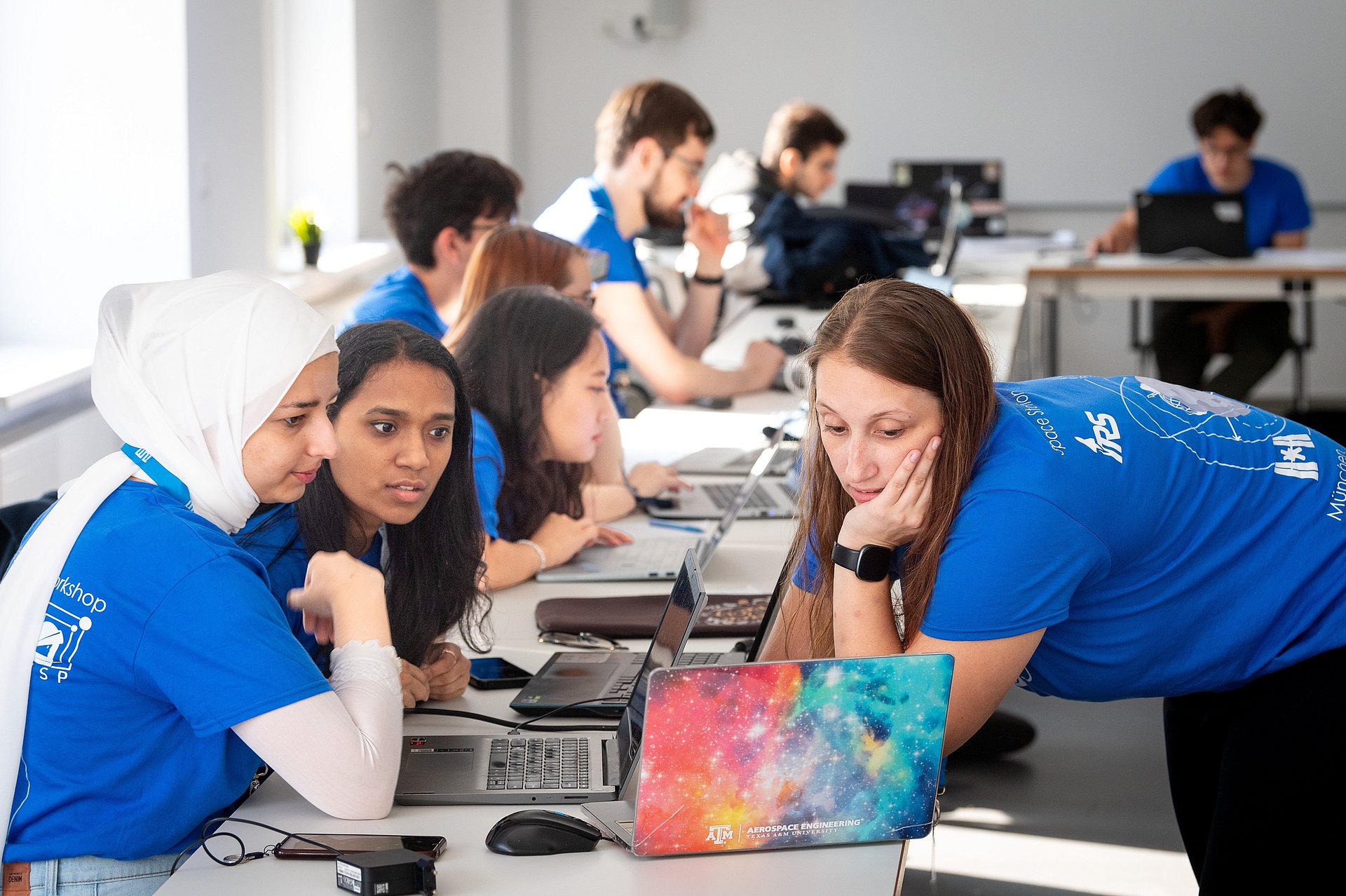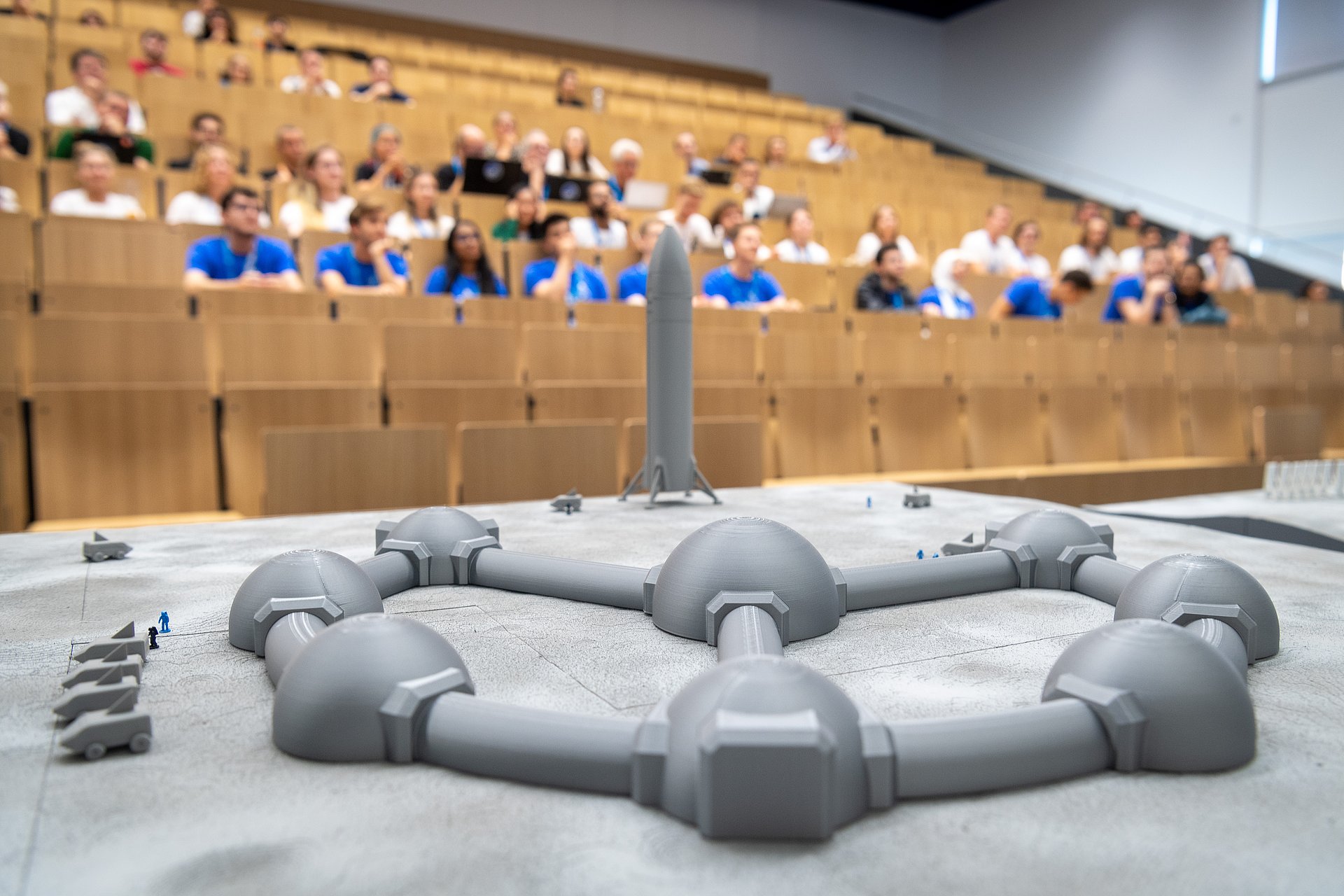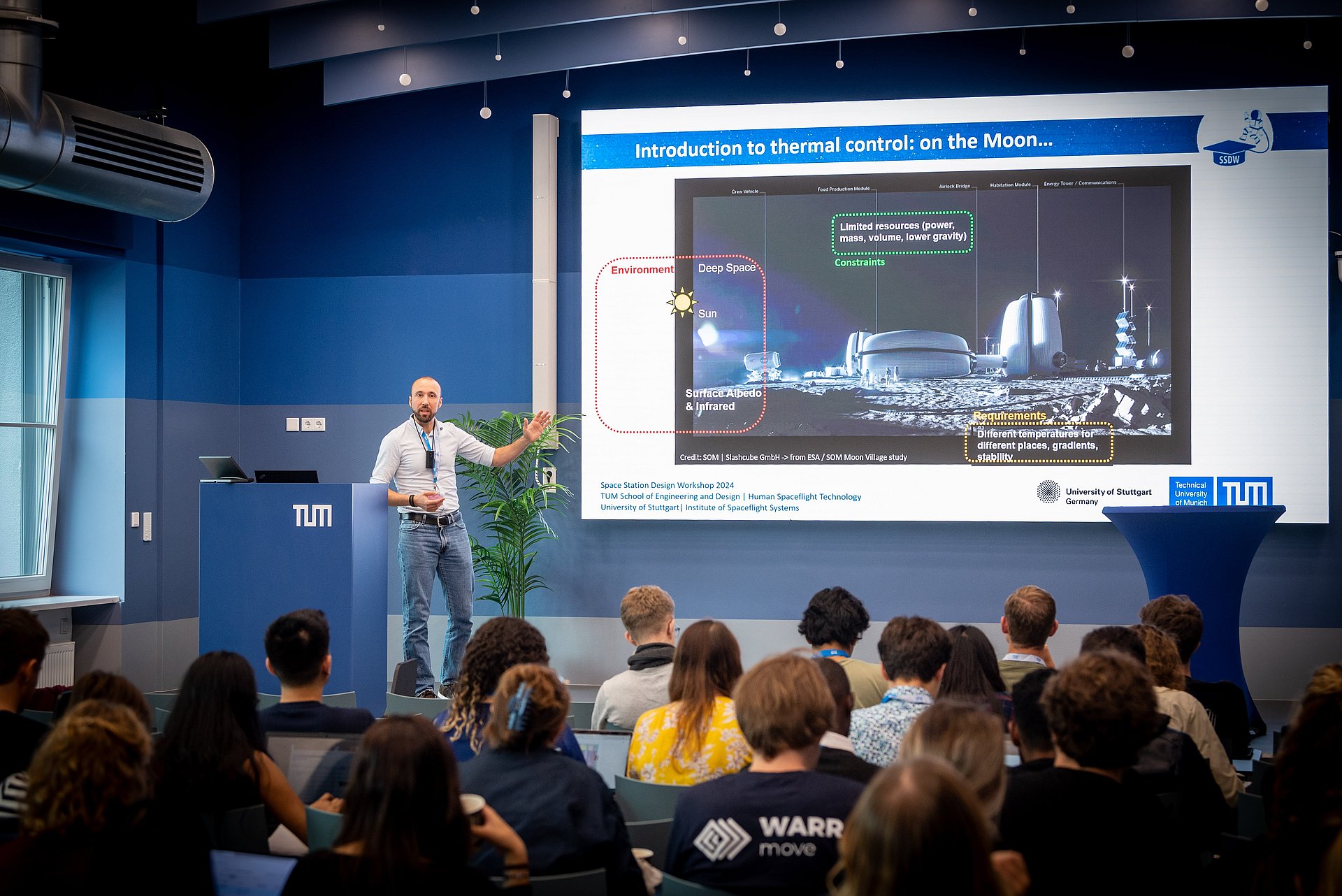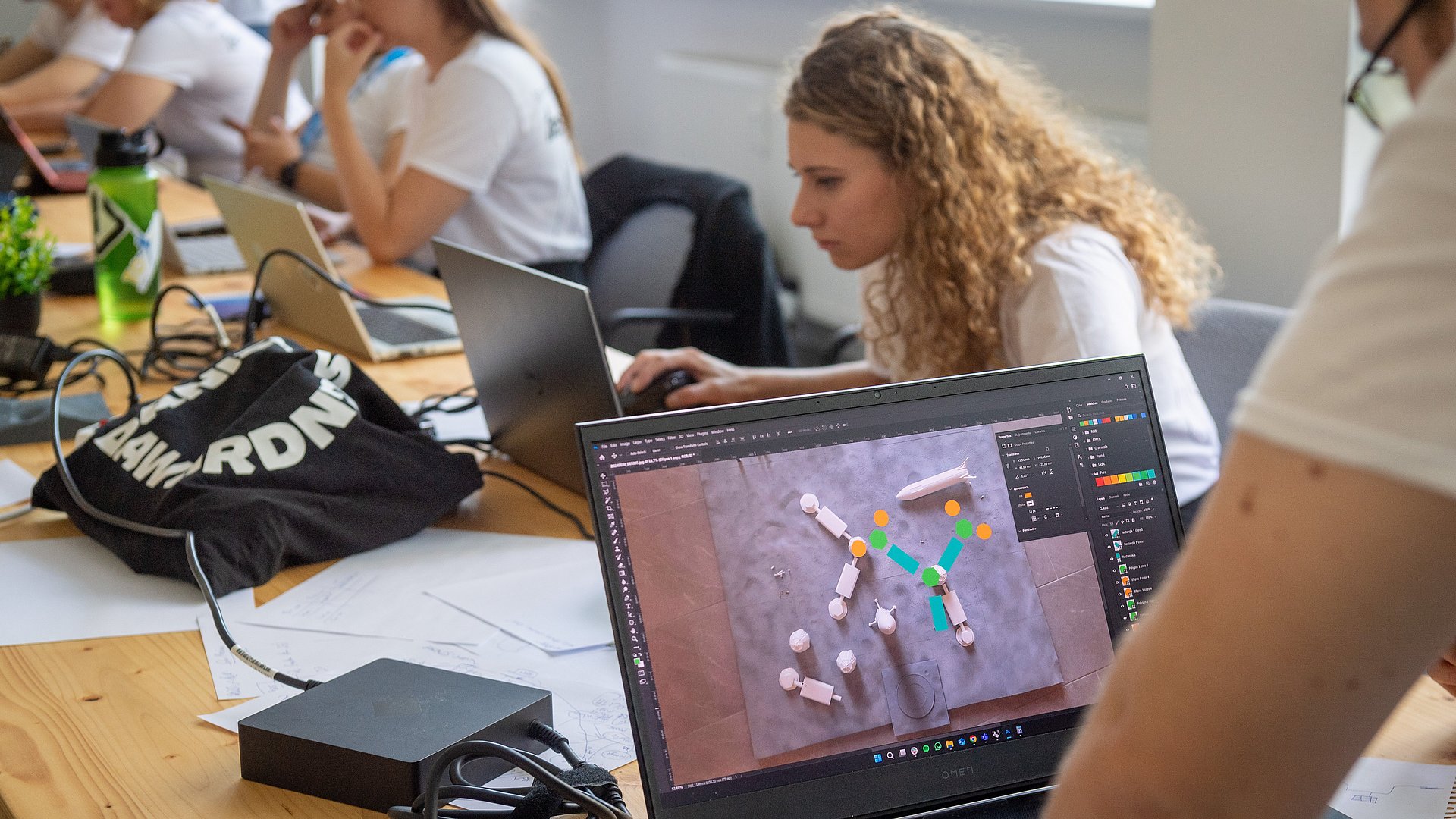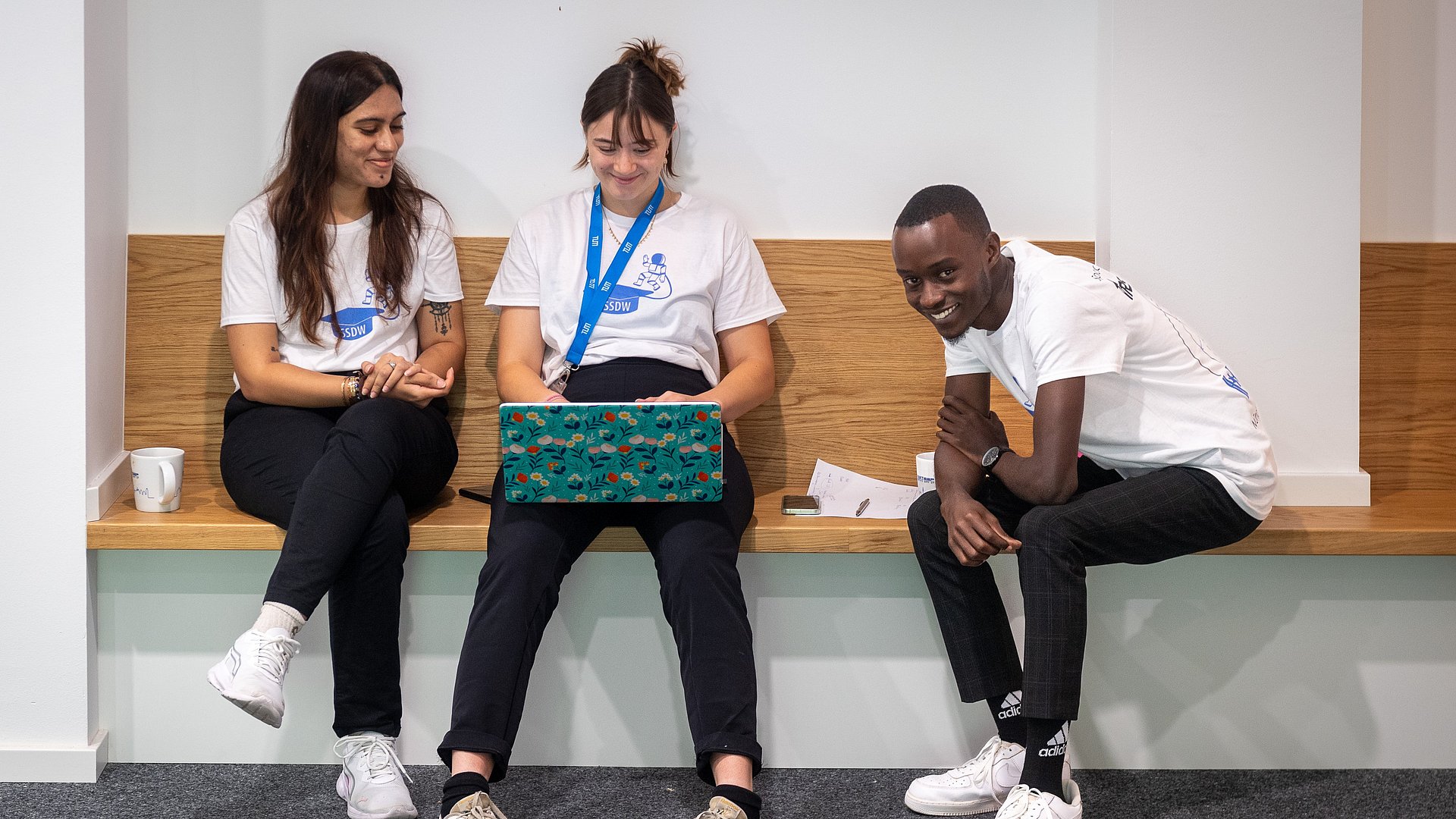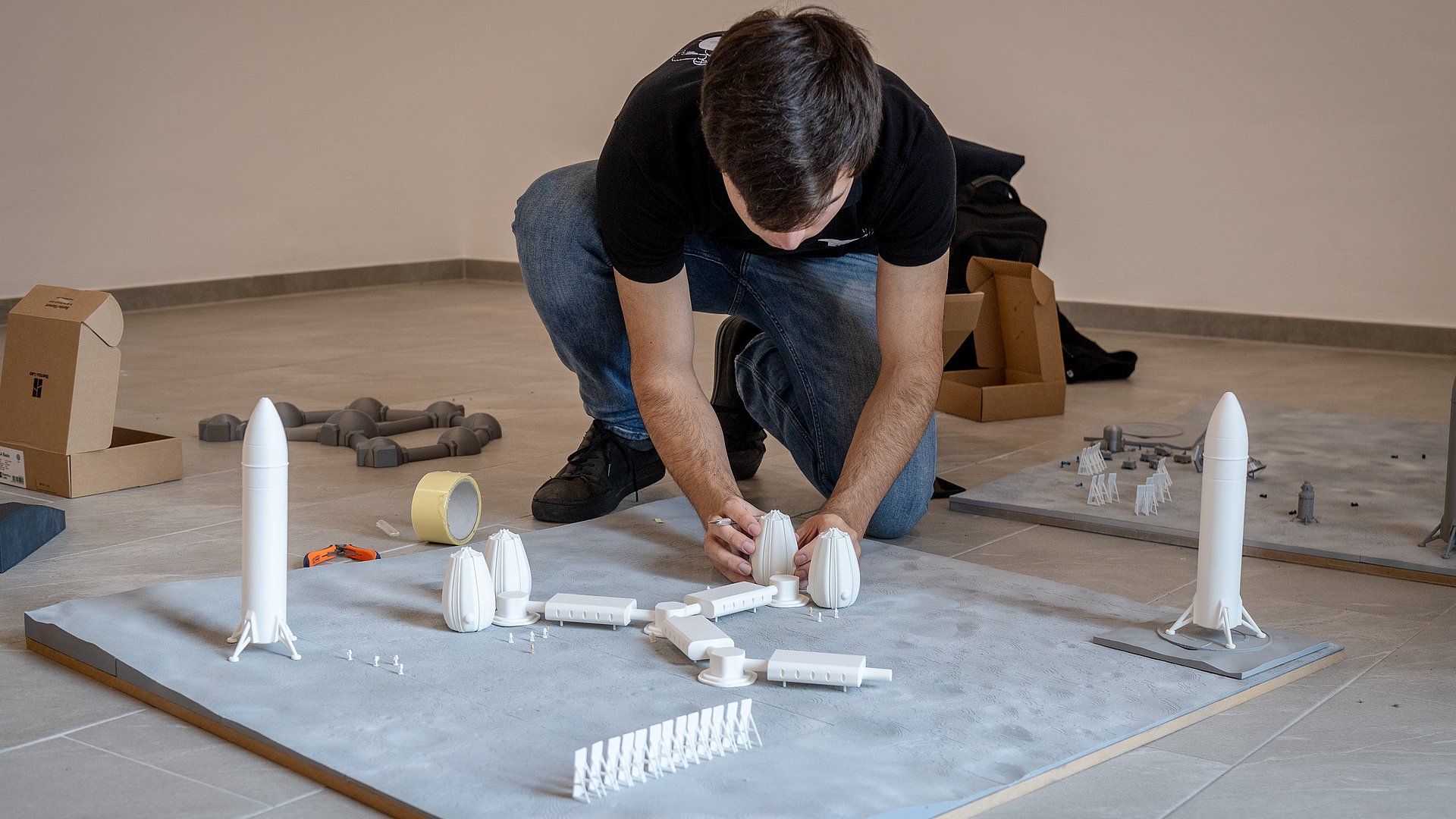Space Station Design Workshop 2024
How to live on the Moon in 2050?
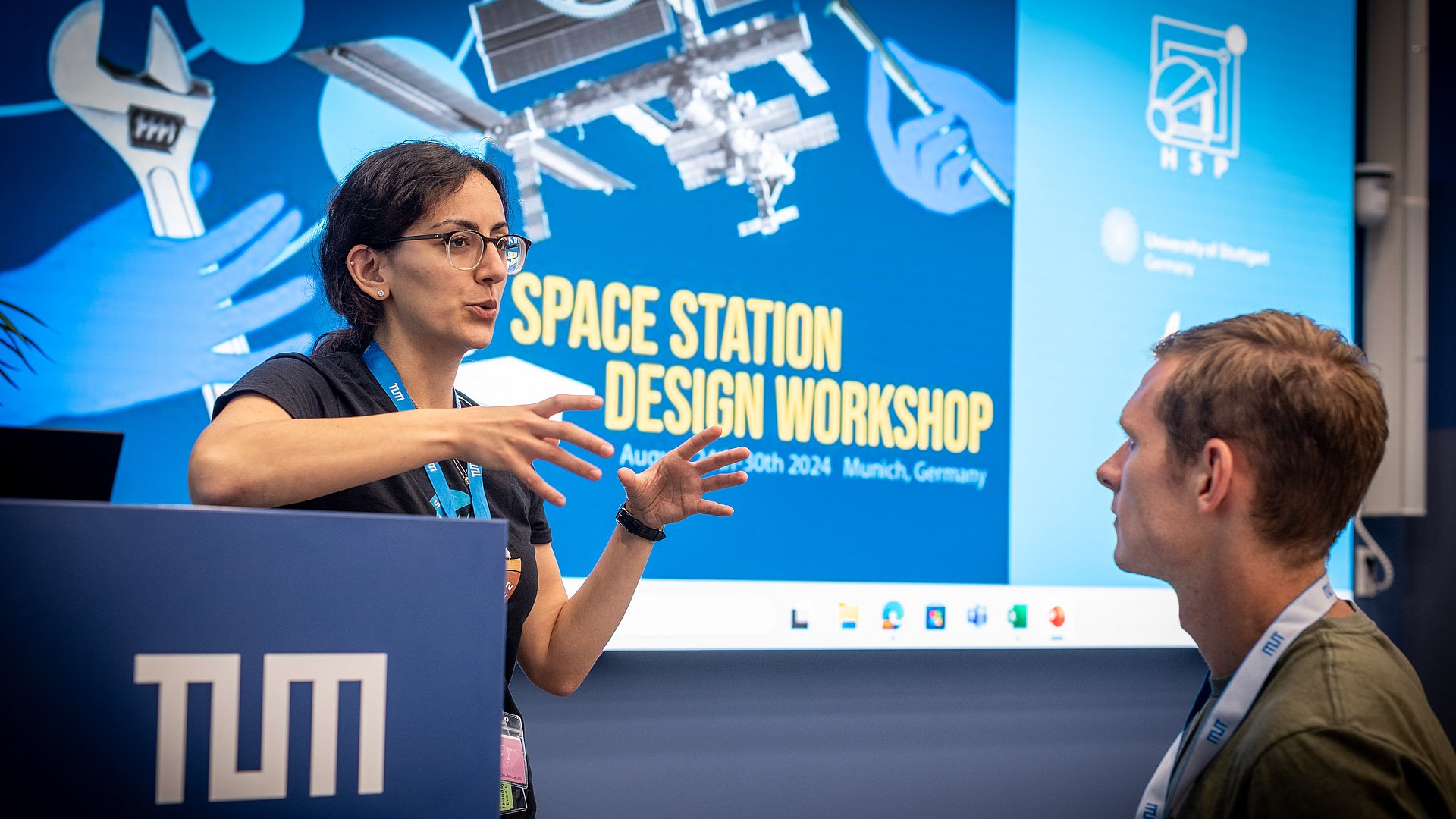
The last time a man set foot on the Moon was over 50 years ago. Well after the last Apollo mission in 1972, a new race for manned missions to the Moon has begun. Not only NASA and ESA, but also space agencies from Russia, China, and India, as well as private companies, want access to the Moon. There are already plans to colonize the Moon. One day, it will serve as a hub and stopover for long journeys into the depths of space.
Two teams, one competition
But how do you survive at temperatures between plus 120 and minus 230 degrees Celsius? Where do the vital air and drinking water come from? What happens to human waste, and is it possible to stream videos on the Moon?
These and many other questions and challenges were addressed by the 42 participants of the SSDW 2024, which took place from 24 to 30 August 2024. For a week and often well into the night, the participants, divided into "Team White" and "Team Blue", pondered these questions. The task? Nothing less than the development of a comprehensive infrastructure network for the exploitation of the Moon by 2050, which is expected to be fully operational by 2070.
Wi-Fi and medical care
The small village on the Moon is supposed to have everything you need to survive. In addition, the settlement should be economically viable in the long term. The teams worked on the radiation protection of the accommodation, considered how many unmanned rovers would be needed for exploration and whether the manned vehicles should be equipped with a pressurized cabin or whether the astronauts would rather travel in a bulky spacesuit.
During the discussion of the preliminary presentations, the consulting experts questioned whether the necessary communication via Wi-Fi would still work in the aluminum made accommodations and whether two medical facilities would be sufficient for 75 permanently settled astronauts.
There are major challenges not only in terms of life-sustaining measures, technology and communication, but also in terms of adding value. After all, the settlement should not only cost money, but also generate revenue as a stopover for space expeditions.
The mission statement sets out specific targets: At the start of operations in 2050, 10 tons of fuel are to be produced every month and, ultimately, 100 tons by 2070. The participants work on a business plan until the very end. How expensive is fuel production, how much is needed for the onward flight, and what prices can be charged for the refueling stop? All of this has to be taken into account. The teams are very creative in their search for additional revenue sources. One team even plans to produce lunar wine as an exclusive export product.
Interdisciplinary expertise
The colonization of the Moon requires not only space expertise but also in-depth knowledge in fields such as architecture, biology, medicine, law, and business administration. The teams benefit from each other's interdisciplinary backgrounds.
At the same time, they receive intensive support from 24 experts from science and industry. Numerous lectures on topics such as project management, space law, communication, robotics, and radiation provide further basic knowledge.
Award ceremony above the rooftops of Munich
The time has finally come on Friday. After a week of hard work, both teams present their designs. For the first time in the history of the SSDW, there are not only concept presentations but also models from the 3D printer. The habitats, launch and landing pads, the infrastructure for generating energy and resources, and other details were presented on a 1:200 scale on a one-square-meter lunar landscape. The jury consisted of the 24 experts. Among them is astronaut Reinhold Ewald, who organized the workshop in previous years.
The participants' tension must now give way to patience. Because before the award ceremony, it's off to Munich. The event team has chosen a special location for the award ceremony - far above the rooftops of the state capital. The SSDW 2024 finally ends in the Vorhoelzer Forum at the TUM main campus. In the end, the winning team was "Team Weiß" by a very narrow margin.
Further impressions
- The SSDW had been held regularly at the Institute of Space Systems (IRS) at the University of Stuttgart since 1996. Prof. Gisela Detrell, recently appointed Professor of Human Spaceflight Technology at TUM, brought it to the TUM Aerospace Campus in Ottobrunn. She herself took part in the workshop as a student in 2009. This experience not only strengthened her desire to pursue a career as a researcher in the field of aerospace, but also made her a leading member of the organization committee. In the future, the SSDW will be held annually, alternating between TUM and the IRS in Stuttgart.
- The workshop was mainly funded by the Bavarian State Ministry of Economic Affairs, Regional Development and Energy, the German Aerospace Center (DLR) and TUM. In addition, numerous companies and agencies supported the workshop, either financially, by sending an expert or by providing software licenses.
- Space Station Design Workshop
Technical University of Munich
Corporate Communications Center
- Moritz Müller
- mo.mueller@tum.de
- presse@tum.de
- Teamwebsite
Contacts to this article:
Prof. Dr. Gisela Detrell
Technical University of Munich (TUM)
Professorship for Human Spaceflight Technology
Phone +49 89 289 55671
gisela.detrell@tum.de
